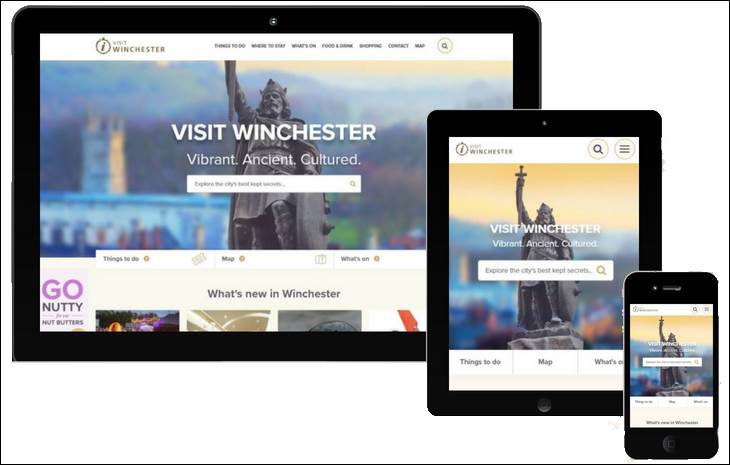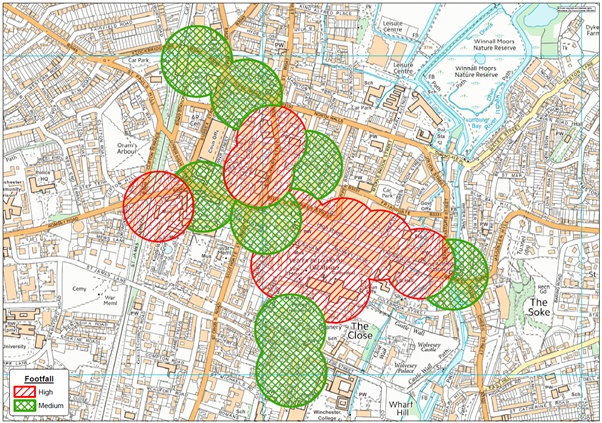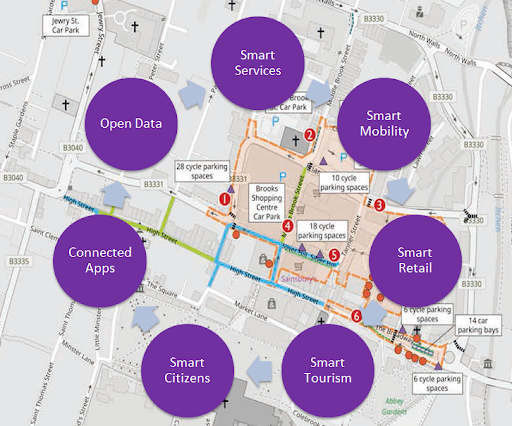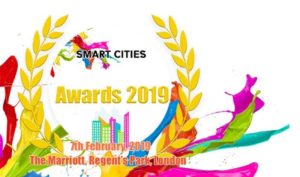The following article is based on an interview Chris conducted with Chris Roberts, conducted with Chris Roberts from Winchester City Council (WCC). leading on the Digital Winchester projects.
Context
The city of Winchester is historically important and has a thriving local economy and active arts scene. As well as being the administrative capital for the county of Hampshire, Winchester is also a gateway to the South Downs National Park and a largely rural district. The city is close to London (63 miles), with Portsmouth and Southampton on the back doorstep too. All elements that shape the culture and outlook of this great city.
Digital Winchester
The city council has a vision for bringing the district into the 21st century via a number of ‘smart city’ projects. The first is aimed at improving the city experience by harnessing data and new digital infrastructure. The overall program is called Digital Winchester – creating a smart district and encompassing other projects including smart mobility; smart health and smart buildings.
This has led to two distinct yet intertwined projects being commissioned in this first phase:
i) delivery of a new city centre wifi service;
ii) commission a new visitor experience app
The Digital Winchester project is following a standards-based approach to implementing the program. So now the time is right to gauge the impact of the BSI Smart City standards, in particular, PAS 184 ‘Delivering Successful Smart City Projects”.
How has the experience been perceived by the team responsible for this exciting new smart city project?
The scope of ‘Digital Winchester’
Firstly, let us investigate the problem that a ‘Smart Winchester’ is seeking to address. Winchester City Council (WCC) recognises that by taking advantage of advances in digital infrastructure, applications, and analytics, they will be able to offer new, better, and more cost-effective services to residents, businesses, and visitors. Therefore, by exploiting this new technology, it is possible to increase productivity and realise new economic benefits. For instance, an increased spend per head in the city and an improved probability of a repeat visit.
But let’s also understand that a new platform for local business is being created. A platform that offers new channels to promote and deliver an improved visitor experience. To keep ahead of the pack, these channels will need to be innovative, and entertaining and give the public a reason to participate. An example could be an augmented reality (AR) centric advertising experience.
Benefits Realised?
The use of a structured assessment method has had benefits for both parties, i.e.: the city team and the smart cities practitioner/consultant. One positive outcome has been the 100% buy-in to adopting the standards-based approach by the city team. No pushback from city stakeholders, although the speed of adoption could be faster. The key is that the direction of travel is set. Standards rule.
“It helps us to think more externally, and highlights the need to bring in the other city stakeholders” – Chris Roberts
From WCC’s perspective, the PAS184 approach has broadened the thinking and highlighted the other interactions that are required to deliver citywide success. As Chris Roberts (WCC Digital Winchester lead) said, “It helps us to think more externally, and highlights the need to bring in the other city stakeholders”.
Other key achievements are:
- Secured buy-in from the city leadership team to the smart city vision and adoption plan.
- Recognised the plan is used by other collaborators in the city region too (e.g. Winchester BID).
- Broadened the thinking and consideration for other projects in the future.
- Highlighted gaps that need to be filled in terms of participants, governance, and tasks to be done to deliver a smart city.
From a practitioner’s perspective, the use of the method has provided focus, structure, and evidence to back up an argument. Plus, it has saved the client money and time. This is because the evidence the approach generated helped re-scope the program to be more realistic in terms of ambition. Which led to more reasonable and affordable objectives.
Success looks like…
The Winchester community has identified a set of measurable criteria to judge whether Digital Winchester is a success.
The criteria are:
- Increased footfall and dwell time
- Increased visitor spend per head.
- Positive impact on GVA.
This criterion is how any activity, task, or decision is agreed to and framed. Agreeing what the outcome is at the start has been one of the benefits of the approach.
PAS 184 meeting expectations
The PAS 184 approach starts with scoping sessions which created a set of cross-stakeholder storyboards. This told the story that was to be realised, which led to a joined-up, bought-into set of requirements. These requirements were then prioritised against their ability to meet the city’s identified success criteria. The approach is constantly asking whether a project meets the city’s goals. Does this project deliver the success expected? This helps give focus and prioritise what gets done and when.
Using the PAS184 as a guide naturally leads to a focus on the outcome. This then provides a backstop for assessing whether a particular task is going to meet expectations. This is important as the overall project captures the people and process impacts as well as what the data processing tech should be.
Goals and expected benefits were set by the needs of the city and then mapped in terms of realisation back to the city’s digital strategy. This recognises that any smart city project is one of many competing for the city’s attention and resources. The projects have to find their place in the pecking order.
What else can we expect?
However, other extra benefits have been identified that can be capitalised on by external stakeholders. For example, the Winchester BID community is being given an extra sales channel to promote their member’s offers and services. Yet, this community needs training and access to this new opportunity too. Simply putting the tech into the audience’s hands is not good enough. That will not deliver the success expected. This is a collaborative and team effort. As such it needs a collaborative and multi-pronged approach.
Following smart city standards is driving some side benefits too. For example, it helped triage the various different technical options by providing a sense of cost versus benefit. This has led to a very tight prescriptive requirement as the city knows what it now wants. This has had two benefits. Firstly the market (i.e. vendors) can be precise in describing how they will meet the requirement. Which leads to a good quality set of responses to market engagement. This drives the second benefit, which is an increase in the city’s confidence that what is being asked for from the market can and will be delivered in the budget and timeframe available.
 Visit Winchester: http://www.visitwinchester.co.uk
Visit Winchester: http://www.visitwinchester.co.uk
In terms of making Winchester ‘better’, the Digital Winchester program is anticipating a number of benefits as a result of this new digital investment. One of those will be an improved insight for the local business community on who is visiting Winchester. As well as offering improved information delivery and a more interactive experience for visitors. Which will increase the likelihood of a repeat visit and encourage visitors to spend more whilst in Winchester.
Citizen Rights?
The residents, workers and visitors are the most important focus of any smart city project. PAS 184 encourages some checks and balances to be in place from the start which puts the ‘citizen’ front and centre. An example of this is the importance placed on ‘Privacy by Design’ principles which were successfully adopted as a key design principle during the requirements capture phase and followed through in the procurement process for the urban wifi and visitor experience app.
Urban Innovation
The two Digital Winchester projects launched in this first phase are great examples of advancing urban innovation – In that having a new free-to-access digital connection provided by the new Wi-Fi service is a societal good. It will create new connections and new data points. These can be used for other purposes in the future (generating new insight). Plus, the new visitor app will be another reason to enjoy the cultural and historical aspects of Winchester, bringing stories to life and increasing the awareness of Winchester as an important shaper of the UK’s heritage.
 The new free Wi-Fi coverage in the city
The new free Wi-Fi coverage in the city
In terms of increasing GVA, the new urban Wi-Fi environment will require local management. The new visitor experience app will also drive local business growth. Both elements will create new opportunities for UK business in the immediate term: ranging from new content for augmented reality storytelling; to analysis of footfall data and new marketing techniques to connected citizens. These new services can also be packaged for export to other cities in the UK and beyond.
Other opportunities that are in the pipeline include new digital information channels such as digital signage, (including having interactive screens). Plus the expansion of city-wide digital services to citizens (not just visitors), so a new citizen engagement app is in the plan and will build on the foundations of the visitor app. Plus the embracing of digital services for the city’s own assets, (for example, the new leisure centre being commissioned as a ‘smart building’). Yet it is the embedding of the governance and adoption of an outcomes-centric view that is most critical. This will help realise Winchester as a ‘smart city’ faster.
Recommend the approach
To conclude, following the PAS 184 methodology has meant Winchester is now better equipped to focus efforts and resource on the ‘correct channels’.
Having a client recommendation is always a great validation. The comment from Chris Roberts was emphatic.
“Yes, I would recommend following the PAS smart city standards methodology. It quickly realises the benefits that occur when you plan to cover all bases when delivering a smart city project”
Chris added a tip for others:
“Start following the method early before over defining the deliverables. This is because you can use the method to help better define what those deliverables will actually be. The method identifies clearly the path to success”
A great endorsement of why PAS184 delivers successful smart city projects.
Hot off the press
On the 18th January 2019, the Digital Winchester project was shortlisted for a UK Smart City award in the Citizen Engagement category.
KnowNow Information Smart Cities Service
Over a decade of hands-on experience innovating and delivering smart city projects and helped to create PAS 181 (which has subsequently become ISO37017) “Sustainable cities and communities — Guidance on establishing smart city operating models for sustainable communities”
The service that KnowNow provides is focused on ensuring that good-quality digital projects are commissioned. That is smart city projects that the market can deliver. With requirements that are joined up and outcome-centric. Along with project governance that creates a collaborative and interoperable plan.
KnowNow was commissioned by Winchester City Council to be their trusted smart city advisor.





Trackbacks/Pingbacks